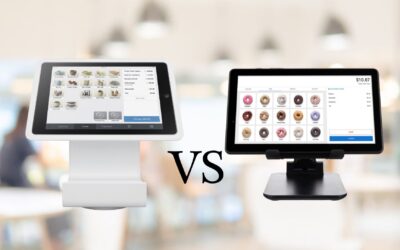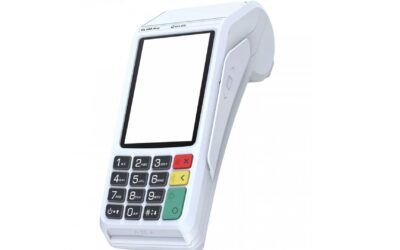
How Does a Payment Processing System Work?
Written by: Zac Rogers
Understand how a payment processing system connects customers, banks, and merchants for seamless digital payments with easy and reliable security with PayWavez.
Accepting credit and debit card payments has become essential nowadays. But have you ever wondered how a payment processing system actually works? Understanding the process can help business owners choose the right tools and providers to ensure secure, fast, and reliable transactions.
At PayWavez, we specialize in Dejavoo-powered payment solutions, offering businesses end-to-end support—from terminal setup to transaction management. This article breaks down the payment processing system in detail, helping you understand every step and how PayWavez can optimize your business payments.
What is a Payment Processing System?
A payment processing system is a network that enables financial transactions between a customer and a business. It ensures that when a customer swipes, taps, or inserts a card, the payment is authorized, processed, and settled securely and accurately.
Key components include:
- Payment Terminals: Devices like Dejavoo QD2 and QD4 that capture payment information.
- Payment Gateway: Software that securely transmits payment information.
- Payment Processor: Handles transaction authorization and communicates with banks.
- Banks & Financial Institutions: Customer’s bank (issuer) and business’s bank (acquirer).
The ultimate goal is to make transactions fast, secure, and seamless, benefiting both businesses and customers.
Step-by-Step Payment Processing
Here’s how a typical card transaction works:
Step 1: Customer Initiates Payment
The process begins when a customer swipes, inserts, or taps their card on a Dejavoo terminal. Modern terminals also support contactless payments like Apple Pay and Google Wallet.
Step 2: Transaction Data is Captured
The terminal reads the card’s data:
- Magnetic Stripe: Contains the account number and security data.
- Chip (EMV): Provides enhanced security through encryption.
- Contactless/NFC: Communicates wirelessly with the terminal.
At PayWavez, all Dejavoo terminals are configured to capture data securely and transmit it for authorization.
Step 3: Payment Gateway Encrypts Data
The payment gateway securely encrypts the customer’s data to protect against fraud during transmission. This step is critical for PCI DSS compliance, ensuring sensitive information like card numbers are never exposed.
Step 4: Authorization Request Sent
The payment processor receives the encrypted data and contacts the customer’s issuing bank to check for available funds. The bank then approves or declines the transaction based on:
- Available balance
- Card validity
- Fraud detection systems
Step 5: Authorization Response
The approval or decline message is sent back through the payment gateway to the terminal. If approved, the transaction proceeds; if declined, the terminal displays an error message.
Step 6: Receipt Generation
Once the transaction is approved, the terminal prints or emails a receipt to the customer. Proper paper management in Dejavoo terminals ensures this step is smooth and hassle-free.
Step 7: Settlement
At the end of the business day, transactions are batched and sent to the acquiring bank for settlement. Funds are then deposited into the business’s account, completing the payment cycle.
Key Components of a Payment Processing System
To better understand the process, let’s break down the main components:
- Payment Terminals
Devices like Dejavoo QD2 and QD4 capture card information, process transactions, and generate receipts. - Payment Gateway
A secure online platform that encrypts and transmits transaction data from the terminal to the processor. - Payment Processor
The company that communicates between the gateway and banks to authorize and settle payments. - Acquiring Bank
The business’s bank account that receives the funds from card transactions. - Issuing Bank
The customer’s bank that approves or declines the transaction.
Security Measures in Payment Processing
Security is a top priority. Here’s how Dejavoo terminals, supported by PayWavez, ensure safe transactions:
- Encryption: Data is encrypted from terminal to processor.
- PCI Compliance: Terminals meet global security standards.
- Tokenization: Sensitive card data is replaced with a secure token to prevent fraud.
- Fraud Detection: Real-time monitoring detects unusual activity.
These measures protect both the customer and the business from potential risks.
Advantages of Using Dejavoo Terminals with PayWavez
Using Dejavoo terminals with PayWavez payment systems offers multiple benefits:
- Faster Transactions: Reduce wait times at checkout.
- Versatility: Accepts credit, debit, EMV, and contactless payments.
- Reliability: Terminals are robust and designed for continuous use.
- Seamless Integration: Works with POS and accounting systems for smooth operations.
- Comprehensive Support: PayWavez handles installation, maintenance, and troubleshooting.
Common Challenges and Solutions
Even with advanced systems, businesses may face challenges:
- Connectivity Issues: Terminals may fail to transmit data in unstable networks. Solution: QD4 supports 4G LTE for uninterrupted service.
- Paper Jams or Running Out: Disrupts receipt printing. Solution: Proper paper management and high-capacity rolls.
- Declined Transactions: Can occur due to insufficient funds or fraud alerts. Solution: Transparent communication and backup payment options.
PayWavez ensures these challenges are addressed proactively, keeping your business running smoothly.
Optimizing Your Payment Processing System
To maximize efficiency:
- Choose the Right Terminal: Select QD2 for small businesses or QD4 for higher transaction volumes.
- Train Staff: Ensure your team knows how to operate the terminal correctly.
- Monitor Transactions: Regularly review reports for discrepancies.
- Regular Maintenance: Keep terminals updated and clean to prevent errors.
PayWavez offers full-service solutions to optimize your payment system, including hardware selection, setup, staff training, and technical support.
Conclusion
A payment processing system is the backbone of modern business transactions. From card swipe to settlement, each step ensures that funds are transferred securely, quickly, and accurately. Using Dejavoo terminals supported by PayWavez gives businesses the confidence to accept payments with speed, security, and reliability.
Whether you operate a small boutique, a busy restaurant, or a retail chain, understanding how your payment system works—and choosing the right terminal—can improve customer experience and operational efficiency.
Experience seamless payments today with PayWavez and Dejavoo. Contact us to set up your complete payment processing system and enhance your business transactions.
Winning with PayWavez
Our Blog
Why Small Retailers Are Overpaying on Transaction Fees in 2026 — And How to Fix It
Written by: Zac Rogers Tired of overpaying on transaction fees? Discover how PayWavez slashes costs for Alabama businesses with low-rate processing, PCI compliance, and seamless POS integration. Start saving now!In 2026, many small retailers are losing money in a...
Competitive Payment Comparison: Paywavez vs Square, Toast & Stripe
Written by: Zac Rogers A competitive payment comparison for merchants. Explore fees, POS features, and which platform fits your business best.Every missed payment, delayed settlement, or complicated checkout quietly costs a business time, trust, and revenue. For small...
Valore Terminals: Advanced Payment Solutions for Modern Businesses
Written by: Zac Rogers Boost your business efficiency with Valore Terminals. Quick approvals, secure transactions, and easy-to-use payment devices.In today’s fast‑paced commerce world, businesses need payment systems that are fast, secure, flexible, and durable. With...




